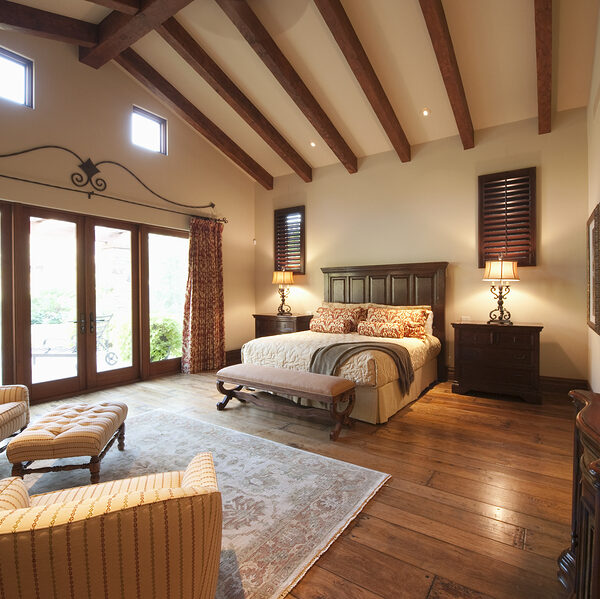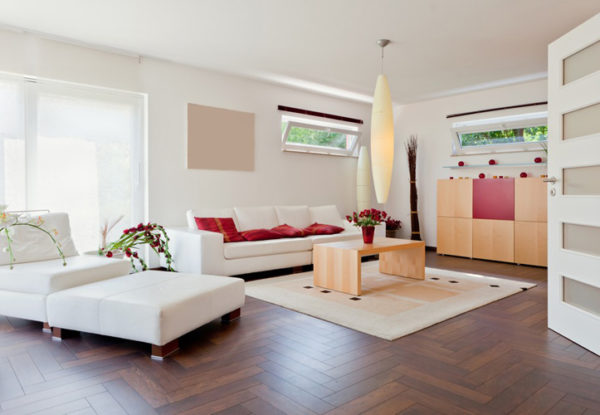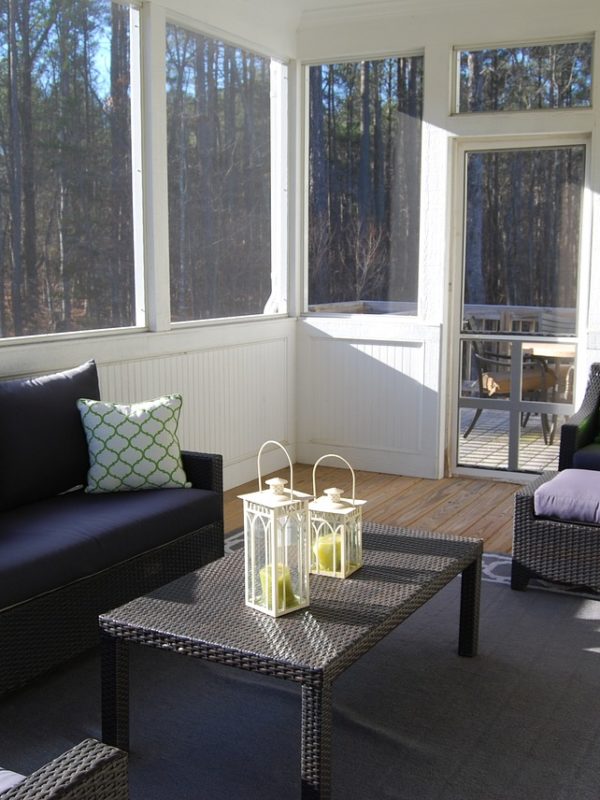How Much Does a Home Addition Cost?
Cost of Home Additions: Growing Family Needs, Convenience, Equity Values.
Cost of Home Additions: Growing Family Needs, Convenience, Equity Values.

Adding a room or living space to an existing home is one of the most common and best return on investment home improvement projects homeowners can take on. The national average for a home addition project is approximately $41,749. Depending upon your contractor and how you may or may not sub out parts of the work the typical range will come in between $19,400 – $65,000. Smaller addition projects of 250-350 square feet average $24799 in the U.S.
One of the many possible pitfalls homeowners face when undertaking a home addition is to be far too hasty getting started. There are many important factors that must be weighed regarding the design, material choice, and contractor selection. Then, once you do decide on the basic overview of what your project will entail, you have to be prepared to oversee the work as it’s being completed.
This guide will provide you with an excellent high-level blueprint detailing how to best manage a home addition project including the costs. You’ll learn how to set your expectations so you aren’t disappointed and also how to defend against settling for less than you deserve.
A home addition is no small investment and you deserve to get your money’s worth. The process should be joyful and exciting. Proper planning and taking certain precautions can help to prevent costly mistakes and wasted efforts.
Major home improvement project including a home addition project typically comes down to the scope of your project. Adding new space to your home which can be a major or minor remodeling project, Converting unfinished space, Adding completely new space (room(s) to your house.
How you choose to build onto your home will make a huge difference in terms of cost, disruption to your life, and potential legal hassles you might face having to do with zoning and permits. Did you know that your municipality may only allow you to build upon a certain percentage of your entire lot?
Did you know that there are sometimes requirements as to how close you can build to the edge of your lot? These rules are especially common if you live on a suburban street where homes are situated close together. Be sure to call your local municipality and inquire about any restrictions or necessary permits before getting started.

While it might seem obvious, some people forget that there are options in terms of which way to build — either upward or outward. Kitchens are almost always on the main floor of a dwelling and unless you’re going to expand your kitchen into another room on your first floor, you’ll need to create more space on the main floor in order to accommodate a larger kitchen.
If your home addition is an additional bedroom or a rec room is your wish, you may consider building upward rather than outward. That being said, the vast majority of home additions are done on the main floor.
Nearly all main floor addition projects will begin with an heavy-equipment excavator clearing the land where the new addition will sit. After the area is cleared, your builder will install the foundation or slab footing for the new expansion. Then, he will frame out the walls and install the roof.
After the entire frame and roof of your new addition is erected, your contractor will then open up an entry point from your original structure to your addition. This could entail a simple doorway or possibly a wider space, depending on the intended use of your addition and the design concept you’ve established.
Building outward is also usually more affordable than adding a second floor.
When adding on to your main floor, you’ll be able to make use of the original part of your home while the construction of the addition is underway. An upward addition will naturally be more disruptive, thus likely causing you to have to relocate for a period of time while the brunt of the construction work is being done.
Learn more about bedroom additions, their costs and request free project estimates
Learn more about bedroom additions, their costs and request free project estimates
Learn more about garage additions and get free project cost estimates
Learn more about sunroom additions and get free project cost estimates
Learn more about bathroom additions and get free project cost estimates

The last thing you want is to have your addition feel like a separate structure that was hastily stitched onto your old home. The ideal outcome is for your entire house to have a sense of continuity whereby every room seems to flow naturally into the next.
You’d like somebody visiting your house for the first time to find it nearly impossible to determine which areas are original to your structure and which are new. The way to ensure continuity is to consider your project as much of a remodel job as it is an addition.
You can certainly opt to add new square footage to your property, but in doing so it will pay huge dividends to consider how to remodel your existing floor plan at the same time. The goal is to create optimal utility and aesthetic benefit within your new addition. It’s all about figuring out how to make the best possible use of your space.
You might even want to think of an addition or remodel as an opportunity to consider how you would have built your home if you were building it from the ground up.
One possibility might be to remove a small bedroom and use the extra space to make another area, such as a family room, larger. Then, you can add a new standard-sized bedroom in the added section.
Ultimately, you’ll want to either hire an architect for larger additions or simply consult with a contractor that also has design experience. It’s one thing to be able to swing a hammer and entirely another to know what will look great and how to make an expanded structure still feel cohesive like it was always one property.

Sometimes there is no questioning it, you’re going to need additional square footage in your home. In other cases, it’s a matter of making better use of the space you already have. You can knock down walls, combine two smaller rooms into a larger one, and turn wasted hallway space into valuable living space.
These ideas represent just a few of the most popular approaches. Additions and remodels both offer you, as the homeowner, an excellent opportunity to optimize your living space. How much remodeling of your existing structure and how much adding-on is best for you will depend very much on your specific intentions and needs.
You’ll save on property tax for every square foot you’re able to remodel on the inside of your home before you start having to add even more on to the outside.
There is no single choice that you’ll make throughout the process of completing your home addition project that will have more of an impact than the contractor you choose. The importance of your decision can’t be overestimated.
No matter what you decide, do not make a snap judgment. The construction process can be long and drawn out so the last thing you want to do is pick a contractor on a whim just because you’re eager to get the project started. A good contractor will work faster and do a better job anyway, so it truly doesn’t make any sense to make a rash decision.
A great deal of the materials selection process will have to do with your budget and your tastes. Beyond your specific tastes, there’s some other considerations such as material costs and matching the new addition to the old parts of your home that also must be considered.

The older your original structure is, the more challenging it may be for you to find materials that are a perfect match when choosing materials for your addition. A good contractor will have the skill to determine the species of wood as well as the stain for any natural wood flooring that was used in your original structure.
Unfortunately, even though this is the case, if your new floor plan calls for a continuously connected floor, with no breaks, you might end up choosing to re-floor the original area along with the new addition with one type of flooring.
The goal is to avoid any sort of unsightly contrasting line where the new flooring meets the old. Roofing will be easy to match if you have a standard gray shingle roof. For other materials and colors, it will be hit or miss. Make sure you address the topic of materials matching when interviewing possible contractors.
The same difficulty will come up when trying to match tile floors. In fact, the chances are slim that you’d find tiles that provide an exact match to what’s already in your home. Depending on how old your current flooring is, it might be possible.
Window style and trim type should be two of the easiest materials to match when shopping for your new addition. While you may not be able to find the exact same windows used in your original structure, you should be able to find something that looks nearly identical.
Finding matching doors could also pose a problem. If an exact matching door style is a must for you, it could mean that you end up having to replace all of your doors. The same will be true of your hardware, like doorknobs and light fixtures.
This desire to match throughout your home can end up having a significant impact on your total budget. Don’t forget to consider these aspects when preparing a project checklist.

After you’ve gotten some names and numbers of local contractors, you’re going to want to invite them to your property to assess the situation, discuss possible approaches, and to go over project requirements. Before meeting with your first contractor, it’s a good idea to write down a checklist of everything you want and everything you absolutely need in your new addition.
By having a set outline of your requirements, when it comes time to start getting estimates, you’ll be able to make sure that the quotes you’re getting are all for the same project. You don’t even have to offer a shot at the job to a contractor that visits and does a poor job selling himself to you.
Assess integrity and skill the best you can with every contractor you meet. The three to five contractors who can best demonstrate an understanding of your needs and show an ability to deliver quality work are the ones that you’ll want to ask for bids.
Talk is cheap. If they talk a great game and exhibit a trustworthy and capable attitude you might be dealing with a worthy contractor, but you should still hold back. Ask the potential candidate if they have any completed projects or work in the process of being completed that you might be able to look at.
If they are confident in the quality of their work, they’ll be eager to give you a first-hand demonstration of just how capable they are. As you meet and converse with each potential contractor, you’re going to want to take excellent notes. When you’re finally done interviewing each candidate, you’ll then review your notes to decide which teams have impressed you enough to warrant a shot at the job. Don’t base your entire decision on price either.
Some contractors are going to “raise a red flag” that should cause you to exhibit caution. Cheaper isn’t always better. The process of choosing a suitable contractor is one of those rare areas in life where “gut instinct” is a powerful ally. Be mindful of how well you can communicate and get along with each contractor you interview. As much as you’re trying to assess skill, you should also try and ascertain the customer service and integrity of each contractor you meet.
When a contractor makes a questionable impression on you, just cross their name off the list. In most areas, you’ll have hundreds of possible contractors to interview and you only really need to get bids from three to five of them. From there, you’re only going to hire one. Remember that you’re the one with the cash, and you’re the one in control. Don’t get talked into anything that makes you feel uncomfortable.
First and foremost, do not even consider starting a project on a handshake. A well-written and detailed contract is an absolute must for any home addition project. Costs can easily escalate if they aren’t planned and agreed-upon in advance. Your contract can very likely be the saving grace that prevents a major conflict. It can also prove invaluable in helping you predict your costs.
The meat and potatoes of your agreement will consist of a detailed description of the project. The more details you can include, the better and more smoothly you can expect the project to go. One of the primary goals of any contract is to clearly state what each party is responsible for and to clear up uncertainty.
Your agreement will include a proper architectural drawing of the proposed addition and renovation work. You may also be able to find a contractor who is able to provide in-house design capabilities. Ideally, you’ll also want a blueprint or at least a builder’s diagram of the proposed dimensions of your addition and renovations.
Try and insist on specifics regarding door location, window placement, electrical outlet placement, switches and light fixtures — to name a few of the most important details. Too many homeowners make the fatal mistake of not discussing material costs until after the contract has been signed and the job has begun.
Before long, your contractor is coming up to you with a pile of cryptic receipts, seeking payment for everything from lumber to screws to drill bits. Your best bet is to insist on an all-in price for the job, including both materials and labor. This way, you not only have the ability to compare estimates from one contractor to the next in a useful way, but you also have a set budget for your project once you choose a building partner. Unexpected and costs unplanned for can make an addition project far more costly than originally predicted.
Part of your “getting to know you” first interview you do with each contractor, is a discussion about how they expect to be paid. If their policy is to get paid in full or get 50% of the project balance up front, just cross them off your list. Any contractor worth their weight in lumber will have faith in their ability and won’t have their finances dangling by a thread.
They’ll agree to earn payment, rather than be fronted. A 10% downpayment to begin work is a reasonable figure most quality contractors should have no problem accepting. Set up payment in installments and leave at least 25% as payable on completion so your workers can’t bail if the going gets tough.
Various consumer-based sources of room addition costs peg the average cost to add a room onto a single-family home to be somewhere in the neighborhood of $20,000 to $50,000. Obviously, the greater the planned square footage is for your new space, the more you should expect to spend. The other primary factor affecting room addition costs is the material selection.
If your intention is to add a very upscale room that will include crown mouldings, tray ceilings, sconces, and chair-rails, your bill is going to wind up on the higher side of the estimation scale. If your intention is to create something very modest like a screened-in porch or a mudroom at the entryway of your home, there’s a good chance you can get away without getting too badly pinched.
Once again, be prepared to spend a bit more for an upstairs room addition compared to one on the first floor.
Another factor that can increase the cost of a room addition project is whether your home is built on flat land or into a hill. If leveling land or building a raised foundation is necessary, you can expect to add anywhere from $6500 to $15,000 extra onto the project cost for each room in an addition.
Truthfully, a home addition project can be quite a serious undertaking. Anybody that tells you otherwise is blowing smoke. That being said, the good news is that you don’t actually have to swing any hammers. If you had to worry about all of the actual labor, you’d have a full-time job on your hands.
Just focus on hiring the right contractor and getting a strong handle on what it specifically is that you want to accomplish.
Then, devote the rest of your energy to interviewing and vetting your various contractor options and putting together an agreement that covers all aspects of the job including time to completion, materials, costs, and anything else relevant to your situation. If you go with a solid and reputable builder who takes his brand name seriously, you shouldn’t ever have to worry about being on the defensive.
In any case, every day of preparation and planning will save you at least a week of going back and forth with a contractor after the project commences. You’re the project manager and having read this guide, you should be fully-equipped to manage it effectively!
Click on the box below to “Get Started” with some local contractor consultations. You’ll find that our recommended workers are of superb quality and will be dedicated to helping you achieve the home addition results of your dreams.
Our contractors are prepared to offer free estimates to all new customers and are eager to provide careful assistance in the planning and budgeting stage of your project. Don’t wait, your home can be more of a home than it’s ever been before. Plus, it can all come together before you know it and quite likely for less cost that you might have even expected.